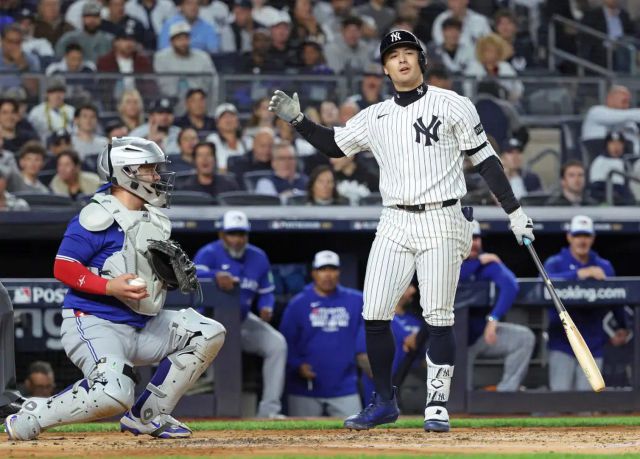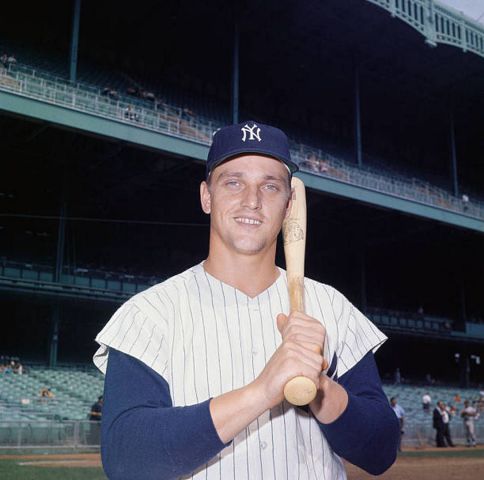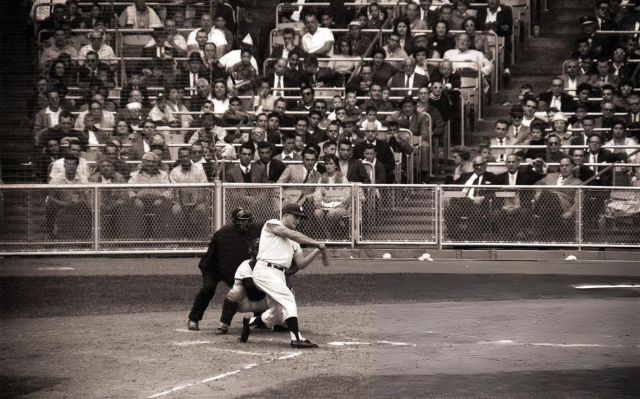-
Posts
21475 -
Joined
-
Days Won
82
Content Type
Profiles
Forums
Downloads
Everything posted by Yankee4Life
-
10 out of 10, 42 seconds. 42 seconds??? No way. I'm done for today.
-
4 out of 10, 57 seconds. This was supposed to be easier today? And like Jim I had seven soccer questions. Tuesdays and Thursday's really make me hate that sport. I mean what the hell kind of a sport is that? They run up and down a big field kicking a ball and you can't touch the opponent. At least in rugby you can clobber the other guy!
-
Fair enough, although I am not sure if this can be done.
-

MLB2K feat. Ken Griffey Jr 1997 conversion mod by Geomlb87
Yankee4Life replied to BJaysFan's topic in Mod Announcements
I think that will be the toughest part of making this mod. Good luck. -
6 out of 10, 98 seconds. 98 seconds! It was like I was sleep walking. They were tough today.
-

MLB2K feat. Ken Griffey Jr 1997 conversion mod by Geomlb87
Yankee4Life replied to BJaysFan's topic in Mod Announcements
Yeah, but you still need to get permission from all three. I looked up the last time each of those guys were here and two of the three have been here recently. Geomlb87 (yesterday) vanopetrov (December 14th, but he always returns to update his mod) and Hanny (August 4th.) Hanny may be difficult. He is also a member of Mvp Caribe but he has not been there since 2023. -
5 out of 10, 51 seconds. Acceptable since I had no idea what some of them were. When it's soccer I just guess and move on.
-
6 out of 10, 64 seconds. The game got me good. The last question was what stadium did the Indians play in 2002 and of course it was Jacobs Field. Well because I was trying to move fast I clicked on Jacobs Field stadium, which was wrong. Hats off to them.
-
10 out of 10, 38 seconds. Just like Friday! I know I should be happy with all ten right but the speed could be better after I know what you all will do today. Frustrating.
-
Alex Rodriguez, you are 100% right. A-Rod torches Yankees ‘absolutely broken’ hitting philosophy with Anthony Volpe at forefront by Peter Botte, New York Post Alex Rodriguez cited Anthony Volpe’s offensive struggles as an example of the Yankees’ “absolutely broken” hitting philosophy. During an appearance Friday on WFAN, A-Rod contended that the homegrown shortstop’s issues at the plate are emblematic of deeper concerns within the organization. “[Volpe] really is an incredible young man with a great family and the organization has fallen in love with him,” Rodriguez said in an interview with Brandon Tierney. “But at some point the numbers don’t lie, right? You have 167 strikeouts [in his rookie season in 2023], 156 [in 2024] and 150 [last season] and here’s a young man that the biggest way he can impact winning is with his No. 1 tool and that’s his legs. But we’ve taken his legs away. “And what I mean by that, here’s a young man who has stolen over 50 stolen bases in the minor leagues. He stole 18 last year. And it’s hard to impact winning when you’re striking out 150 times and you’re hitting .212. So I think if you zoom out, it’s an organization hitting philosophy that is absolutely broken, and until they fix it, I don’t think they win big.” Volpe, a New Jersey native, had success at the plate in the Yankees’ minor-league system, which follows the same hitting program as the one used in the majors. He tallied 27 homers with a 1.027 OPS at two levels of Single-A ball in 2021 and 21 homers with an .802 OPS split between Double-A Somerset and Triple-A Scranton/Wilkes-Barre the following year. But he has posted a .662 career OPS in three seasons in pinstripes, including a slash line of .212/.272/.391 with 19 homers and 72 RBIs in 596 plate appearances. Anthony Volpe has struggled in the majors. It was revealed late in the season that he’d been dealing for much of the year with a partial tear in his left shoulder, which required offseason surgery that could sideline him until May. Barring another move, trade-deadline acquisition Jose Caballero likely would open the 2026 season as the starting shortstop. “You can never predict somebody’s journey, somebody’s impact,” Yankees general manager Brian Cashman said earlier this month at the winter meetings in Orlando. “[Volpe and Caballero are] both quality players in their own right, but … I still believe everything that we felt about [Volpe] prior to his surgery, and I’m happy we have Cabby, as well. So I have no idea where things will go. “The game separates it all, the men from the boys. It dictates who should and who shouldn’t be playing over the course of time from the roster that the manager has. People continue to earn their playing time or they don’t … If it’s competition of guys on the club, may the best man win and keep it.” These comments follow critical remarks made by Rodriguez in which he critiqued the roster construction following the Yankees’ ALDS ouster by the Blue Jays.
-
9 out of 10, 63 seconds. I don't care what my score was. These were tough questions today. I appreciate any bit of advice. Thank you. I have a elliptical machine that I use that seems to help.
-
10 out of 10, 38 seconds. Forget it, just a lousy day time wise. You guys are again going to fly by it. That is good Jim. It really is. With my arthritic knees I can not walk so good anymore.
-
Beautiful! I am very happy for you. You just gave your family the best Christmas gift this year. Take care.
-
Just as long as it's that Jim and not your health.
-

Great and Historical Games of the Past
Yankee4Life replied to Yankee4Life's topic in Baseball History
October 1, 1961: Roger Maris surpasses Babe Ruth with 61st home run Roger Maris, New York Yankees On October 1, 1961, ending a quest that had enthralled both the baseball world and the American public, New York Yankees outfielder Roger Maris capped one of the most spectacular seasons in baseball history when, with one swing of the bat, he became the major-league single-season home-run leader. The New York Yankees had begun the month of September with a 13-game winning streak that not only separated them from the field but also put to rest any doubts about their ability to repeat as American League champions. That fact, combined with the injuries to slugger Mickey Mantle that had removed him from the season-long pursuit of Babe Ruth’s iconic home-run record, left the Yankees’ regular-season finale noteworthy only for the historic opportunity it afforded Maris to surpass the Babe’s hallowed mark of 60 home runs in a single season. And yet for all its historic potential, the reported crowd was little more than a third of what the iconic Yankee Stadium could hold. But in its own way, that lackluster crowd was reflective of the season-long controversy surrounding the record chase, a controversy that had come to a head with Commissioner Ford Frick’s summertime declaration that any new record would have to be achieved within the confines of the traditional 154-game schedule and not the new expansion-induced 162-game slate. That announcement alone probably diminished interest in the season’s final game. Too, for many longtime baseball fans, the idea of Roger Maris as the heir to Babe Ruth was, fairly or not, preposterous, and that fact also may have reduced the number of onlookers at Yankee Stadium that day. And yet from the outset, those in attendance, a boisterous crowd officially recorded as 23,154, left no doubt that they knew they could be witnesses to something special, baseball history being made before their very eyes. Although the World Series was slated to start the next Wednesday, first-year Yankees manager Ralph Houk fielded his regular lineup absent only the injured Mantle who was still in the hospital but who was expected to be released in time to start Game One of the Series. Filling in for him was John Blanchard, who played right field while Maris moved to center. On the mound for the Yankees was Bill Stafford. The second-year right-hander, who was scheduled to pitch World Series Game Three against Cincinnati, was seeking a 14th win in this final pre-Series tune up. Facing the American League champs were the Boston Red Sox, a team finishing their first season of the post-Ted Williams era, a campaign that had left them in sixth place, with a 76-85 record heading into the final game of the season. On the mound against a Yankees team that had set a major-league record with 240 home runs was rookie Tracy Stallard. Under a cloudy sky and with a game time temperature of 70 degrees, Stafford threw the game’s first pitch at 2:03 P.M. and quickly dispatched the Red Sox, striking out the side. The tension in the historic ballpark was evident as the Yankees came to bat: Maris, batting in his customary third slot in the batting order, would get his first chance to hit in the home half of the inning. As second baseman Bobby Richardson came to bat to lead off the Yankees half of the first, the anticipation grew. After Richardson grounded back to the pitcher, shortstop Tony Kubek’s single to center brought up Maris for his first at-bat against 24-year-old right-hander Stallard. After taking the first pitch for a ball, Maris, the quintessential pull hitter, was fooled by changeup, and instead of driving the ball to right, lofted one to the opposite field, where left fielder Carl Yastrzemski hauled it in for the second out of the inning. A passed ball moved Kubek to second but Yogi Berra’s pop fly to second ended the Yankees’ at-bat. The game quickly settled into a pitchers’ duel. After Stafford retired the Red Sox in order in the second, Stallard did the same to the Yankees. And while Stafford proceeded to retire six of the next seven batters he faced, leaving him with a one-hitter through four innings, Stallard opened the fourth by striking out Kubek, making him the ninth straight batter the young right-hander had retired. Next up was Maris, and as he approached the plate he was greeted with a roar. Stallard’s first pitch to Maris was a ball outside; his second was low and in the dirt. The crowd, anxious to see Maris hit, booed Stallard’s careful approach to the slugging outfielder. Stallard quickly delivered the 2-and-0 pitch, and as he had done so many times before that season, the left-handed-hitting Maris turned on the ball and sent it flying into the right-field seats, not far from the Yankees bullpen where his teammates were poised to grab the historic ball. Instead, the record-breaking ball was grabbed by a young man, Sal Durante, who was quickly hustled to the safety by the police. Meanwhile, as the crowd roared, Maris, who recalled that he thought it was gone as soon as he hit it, made his way around the bases, jogging head down, as he had done 60 other times that season. After being congratulated by third-base coach Frank Crosetti and greeted by Yogi Berra at home plate, the happy Maris headed to the dugout. However, the shy record-holder’s teammates would not allow him to remain there, instead pushing him back out onto the field to acknowledge the fans who were joyfully and exuberantly cheering his name and celebrating his unprecedented accomplishment. Maris’s single run held up as the game’s only offense as both pitchers cruised through the opposing lineups. Stafford continued to impress in his Series tuneup, ultimately leaving after the sixth having given up only three hits while striking out seven. He was relieved by Hal Reniff, who pitched a perfect seventh, striking out one. Meanwhile, the Yankees’ offense was no more productive. While the American League champs managed to collect two hits in the bottom of the seventh, putting men on second and third, before Stallard induced pinch-hitter Tom Tresh to pop up to short, in the end Maris’s home run proved to be the extent of their offensive output. Maris himself had two more at-bats, but like much of the game after his record-setting blast, they were anticlimactic. Emotionally spent, he struck out in the bottom of the sixth, not long after having met with Sal Durante, who had been brought down to the locker room to meet the new record-holder. Durante sought to give Maris the ball, and the slugging outfielder was deeply touched by the generous offer. However, Maris was also fully aware that San Francisco restaurateur Sam Gordon had announced a $5000 reward for the record-breaking ball, and so he refused, telling the 19-year-old Durante to keep it and “make yourself some money.” Then, in the bottom of the eighth, Maris made the last out of the Yankees’ regular-season when, facing the Red Sox’ Chet Nichols, who had relieved Stallard after the seventh inning, he popped to second. Closer Luis Arroyo, who had come on in the eighth, dispatched the Red Sox in the top of the ninth, giving up one single, and the Yankees, having finishing the regular season with 109 wins, looked ahead to the World Series, which would open at Yankee Stadium on Wednesday. In many ways the game typified Maris’s season. Through all the turmoil the shy slugger always had the unstinting support of his teammates, who watched in awe as the 27-year-old player dealt with unprecedented amounts of pressure and attention. And in turn, he had always been most concerned about helping his teammates win. Indeed, almost lost amid the fanfare was the fact that the 61st home run represented not only Maris’s league-leading 142nd run batted in, but the only run in the game, indeed, the winning run, in the Yankees’ 109th victory. In the end, that was what Roger Maris – a man whose career saw him play important roles on seven league championship teams and three World Series winners – was always about. October 1, 1961. Roger Maris hits home run number 61. -
8 out of 10, 61 seconds. Believe me I am surprised here. I did have a baseball one and a question about the Raiders so that helped.
-
9 out of 10, 69 seconds. Pretty good but one question stumped me and I am hoping one of you can figure out where I went wrong.
-
ban are you. ok thank.
-
5 out of 10, 51 seconds. For me on a Tuesday this is outstanding.
-
9 out of 10, 79 seconds. In just about every one of these questions I hesitated today. I got a lot right but it wasn't easy.
-
You're in the zone a lot!
-
10 out of 10, 38 seconds. Can you ever tell that you just don't seem to have it for one reason or another? I was just too slow today even though every single question was too easy. Who was known as the Bambino? Yeah, that one made me think. 😉
-
9 out of 10, 58 seconds. A lot of these questions were what I have referred to as stop-and-think ones today because before I clicked on my choice I had to stop and think about it a lot longer than I usually do and when that happens I have a longer time.
-
10 out of 10, 31 seconds. A typical Friday score and I am happy with it. We had a close day today. Look at Jim, he had 33 seconds and any other time that would be a winner by a long shot. We did so good today that score was only good for a third place finish. Wow.






